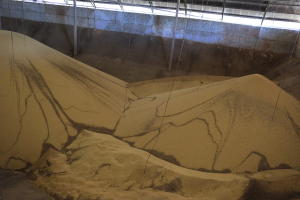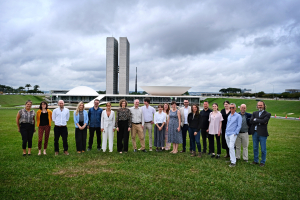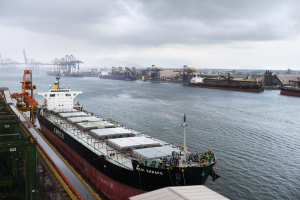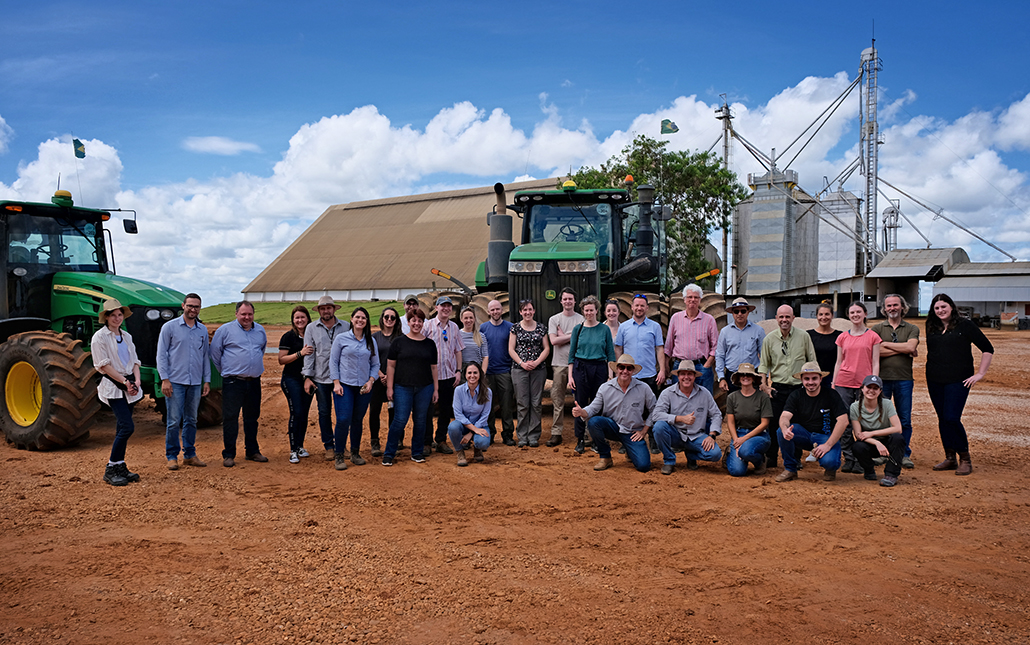3Keel facilitates connection between Brazilian soy producers and policy makers and global food businesses
23rd June 2023
At the beginning of March 2023, 3Keel coordinated a trip to Brazil on behalf of the Retail Soy Group (RSG) and other leading responsible businesses.
The group headed to Brazil to build new relationships between producing and consumer markets, and for its participants to gain a better understanding of soy production and trade on the ground. Through seeing the system in action in the world’s largest soy producing nation, the aim was to return to our organisations better equipped to develop effective deforestation- and conversion-free action plans that protect critical ecosystems, such as the Brazilian Amazon and Cerrado.
The interests of soy importing nations are often presented as at odds with the interests of producing nations. The trip was an important opportunity to build bridges between upstream and downstream players in the supply chain, as well as policy makers and civil society groups, to develop viable solutions to the common challenges we face on the journey towards deforestation- and conversion-free (DCF) soy production.
Alongside RSG members and other food sector stakeholders, we were accompanied by representatives from the Roundtable on Responsible Soy (RTRS), the Responsible Commodities Facility (RCF), Soy Transparency Coalition (STC), and WWF UK.
We planned the trip to provide a ‘field to port’ experience covering three important elements: (1) meeting the producers and landowners; (2) engaging with those writing the policies that affect land protection and use; and (3) the flow of soy to the point of export.
Day 1
Our first day was spent talking to traders. It became clear that the producer-trader power balance has shifted in recent years such that traders might be said to have ‘customers’ rather than ‘suppliers’.
This rise in “producer power” is one of the challenges in procuring sustainable soy, as a trader may be outbid by other traders purchasing from a limited stock of DCF soy. In addition to this, ‘long-term’ contracts in the soy market are often for one season only, further complicating the ability to secure stable supplies of DCF soy. The often well-capitalised and well-informed producers favour selling on the spot market where they can make greater returns. Ultimately this dynamic is becoming a barrier for some major soy buyers from more directly in farms as there is little guarantee that the investments they make will ultimately be in their supply chain.
Lastly, there is some scepticism surrounding how serious consuming markets are in preventing deforestation and conversion when companies and nations have made ‘false promises’ in the past about the scale of the demand for certified soy.
Day 2
Day two was spent quite literally in the fields of Mato Grosso talking to farmers Our first visit was to an RTRS-certified farm, followed by a visit to a farm in receipt of funding from the Responsible Commodities Facility (RCF), an initiative that provides low interest loans to farmers in exchange for their commitment to protect excess legal reserves on their land.

The view from the ground provided a sense of the scale of Brazilian soy production – a ‘large’ farm in Brazil can be 5,000 hectares, equivalent to the size of 5,000 football pitches.
The farmers we spoke to emphasised the pride they take in being compliant with sustainability requirements and the recognition that they are ‘doing the right thing’ by preserving native vegetation. Both RTRS certification and RCF financing were seen as a ‘stamp of approval’ that provided a greater incentive than the actual financial benefits. Pride in being DCF compliant sat alongside pride in the productivity of the farm, echoing the sentiment voiced by one of the traders that ‘production and preservation hand in hand is possible.’
Day 3
We devoted the third day to looking at logistics and traceability through a visit to a trader-owned warehouse. One warehouse held approximately the amount of soy needed to feed the UK chickens for about one major retailer.

The flow of traceability data through the soy system is limited. Fees must be paid when soy crosses between states, so sufficient data on soy origins and volumes is held to enable this, but this traceability data is not currently passed upstream. While DCF soy may flood Europe as a result of EUDR, the challenge will be ensuring it does so transparently.
We spoke to one major trader with an in-house traceability system that uses current satellite imagery to monitor its supply base for deforestation. Uniquely, each soy purchase is checked against this system which effectively blocks purchases from non-conforming suppliers. This however is not yet an industry standard, so the system in use is the exception rather than the norm.
Day 4
Speaking to NGOs and government about policy perspectives was the focus of day four. A ‘new management’ feeling of hope was keenly felt throughout the day, summed up by the phrase, “time has passed and Brazil is back”.

The pride in productivity we saw on the farms was echoed by both Embrapa and MAPA: we heard how Brazil has undergone a transformation in the last 60 years from food insecure and import-dependent to a country that ‘feeds the world’. However this pride is mixed with indignance at how Brazilian production is perceived by Europe as unsustainable, and much of Brazil’s ‘image problem’ was pinned on the previous regime.
Day 5
Our final stop was in Santos, Brazil’s largest port, focusing on export and trade, where the EU demand for DCF soy coming out of Brazil was put in perspective as logistical facilities are shared between all the exporters, often mixing soy from one region and supply chain with that from another.

As Brazilian producers, traders, and policy-makers gear up to meet the demands of the EUDR legislation when it comes into force, uncertainties remain.
We will be looking to see what effect the regulation has on the ground: whether European soy supply is restricted to certain DCF production areas and transport routes, whether the cost of segregated supply sits with the traders or is passed onto the producers, and whether traders’ monitoring systems can meet the demand for polygon-level traceability.
Find out more about our Sustainable Commodities practice area here. Please get in touch with us to find out more.
Consultant
Freya Chambers




